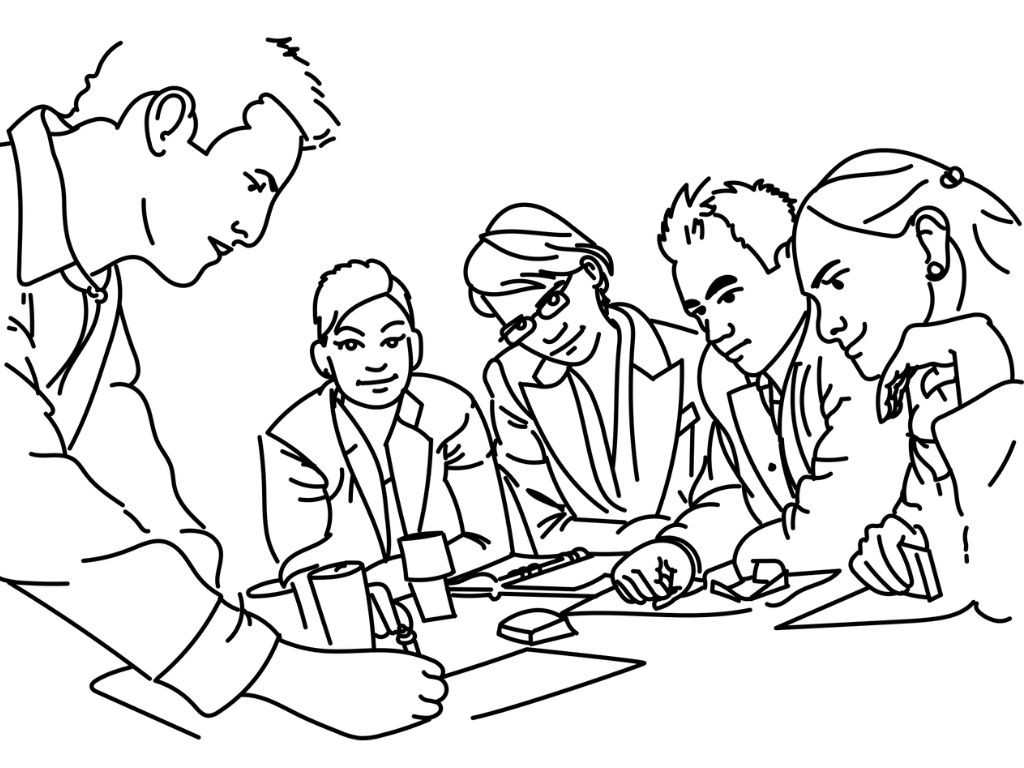
Creating psychological safety
Esseen tyyppi: Yksilöessee / 2 esseepistettä.
KIRJALÄHTEET
| KIRJA | KIRJAILIJA |
|---|---|
|
The Fearless Organization |
Amy C. Edmondson |
Creating psychological safety in the workplace
Based on the book, creating fearless organization by Amy C. Edmondson
Topic
Psychological safety
Amy C. Edmondson is a Leadership and Management professor at Harvard Business school. Amy has done broad research about psychological safety and in this book, Amy opens the results of the research in a clear exciting way. Amy also brings many examples of what is beneficial in creating psychological safety and why you should do it.
So what psychological safety is?
Psychological safety is a work climate where people can express their feelings and mistakes without fear of judgment or negative consequences for being honest. Psychological safety has gotten rapid interest after Google published its research about what makes their best teams best and the number one factor that these teams shared was psychological safety.
Psychological safety What does it mean and is it good to use it why it can happen if you don´t have it?
Psychological safety is a climate where people feel safe to express their emotions tell their thoughts, share ideas, speak up, point out mistakes, and show their mistakes. When this happens, we make it possible that every teammate can bring their value to the table. This is what we all want right? That´s why we hired them in the first place.
Creating a psychologically safe environment is not easy since you must break some people´s perception of what things they value themselves for example for some people it is hard to show their mistakes or someone might be shy to speak up. You must teach them to value new things like honesty, appreciating constructive feedback and so on. You can also try to do this as an employee in a team and introduce your team to this topic.
If not taking psychological safety seriously in the workplace it can have serious consequences in the workplace Amy lists many example´s of this in the book. My example would be the elephant in the room. Nobody speaks up, but everybody knows that there´s something to talk through together. This has a bad effect on the team people don´t feel committed they don´t want to share their ideas and are not willing to do work for the team. It is hard to break down a situation like this and someone must do the first push toward honest discussion.
A company that doesn’t take these things into consideration will have the problem that giving feedback to the higher hierarchy isn´t easy or safe. Give feedback in the wrong place at the wrong time you might lose your job this isn´t going to encourage people to openness in the workplace, isn´t it? It is said that if as a leader you only hear good news you are in big trouble and this way of climate leads directly to this situation. Everybody in the team plays safe when everybody plays safe there are no new ideas or improvements. If you never receive negative feedback as a leader it´s time to find the dusty mirror from the corner and look at it.
So how can we avoid this nightmare?
As a leader, it is your job to create an environment for your teammates where people are willing to take interpersonal risks. This way people are more open to giving feedback, sharing their ideas, and sharing their worries. You have to be the first to admit your mistakes and also be curious about your teammates, show that you have something to learn from them as well.
As a teammate
You can affect this as a teammate as well. It is not possible always some ships are already sinking but this doesn´t mean you have to always settle for the climate you have in your team and then whine about it. You must be willing to take ownership as well as a teammate about it.
Amy highlights also what psychological safety is not which I think is a really important part of the book. Psychological safety as how it sounds can be understood differently by different people that´s why when bringing the concept of psychological safety into your team it is important to ensure everybody has the same image of it in their mind therefore Amy specifies what psychological safety is and is not really precisely in the book.
Psychological safety is not that you always feel comfortable in the workplace and people are nice to you. Actually, it is quite the opposite what I mean by this is that you should have an environment in your workplace where people are willing to go outside of their comfort zone and challenge themselves to for example give feedback about painful things and the on the other side the receiver has to take it in in a constructive way without attacking the person who gave the feedback. Psychological safety in the workplace means that you have honest communication without people having consequences for bringing their real thoughts to the table and sometimes it definitely is hard and painful.
Motive
I have become to be more and more interested in how I can create and affect a group dynamic in a positive way. I have been in many different roles during these few last years, and I want to learn how can I make the environment comfortable and efficient. My experience with different workplaces is diverse I´ve been in just one workplace over 1 summer. This means I have experience with many different working climates and leaders. I´ve experienced brilliant and horrible leaders and many kinds of coworkers. To my observations and according to this book as well I work the best when I know the leader wants the best for me is empathetic and listens and is open to ideas. The worst leader I worked with for around 8 months had a style that I had to work in fear of mistakes every day. It made me do more mistakes and I got tired of work more quickly this isn´t good both for the employer and the employee. Lately, I´ve been working in diverse teams with intense work and one leader’s skill matches the subject of this book my dear friend, schoolmate, Company partner, and former roommate Atso. Atso has a unique way of working in a team. He has never necessarily been leading me but, in many situations, he can influence the situation in a positive way. So why am I bringing Atso as an example? Atso sees things with a longer vision and isn´t afraid of rising hard topics in a group he has long nerve and the ability to hear and respect other people´s opinions. There´s is a lot to learn from Atso.
For the next semester, I will be the Business leader for Flip and I want to bring psychological safety to our team, in my opinion, we have it to a certain degree but there have been some situations in that I feel people have had their safety barriers up. That has a domino effect on the people in the same situation it makes me uncomfortable at times.
My thoughts
Overall, I think everybody that is in proakatemia should read at least one chapter from this book. Amy´s work is based on research that she has done and there are good explanations of how the research came to this conclusion.
For the next semester, I will be the Business leader for Flip and I want to bring psychological safety to our team, in my opinion, we have it to a certain degree but there have been some situations in that I feel people have had their safety barriers up. The mission is that we as a leaders can tackle this.



